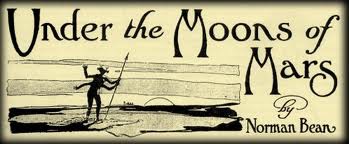
A movie released with a splash in the spring of 2012 has an interesting, if slight connection to the Lovewell family in Kansas. The film was not a Western, even though the characters were invented by a man who had once been a cowboy, a miner, and a cavalry trooper.
Some of my favorite bits of family history are, like this one, things accidentally uncovered while looking for other things. For instance, while investigating the Lovewell brothers’ pioneering settlement of Ringgold County, Iowa, it occurred to me that there is a common thread between Alfred Lord Tennyson’s “Charge of the Light Brigade” and the tidy profit the Lovewell boys piled up by selling rich, black Iowa farm land.
But, more on that another time. For now, back to the movies.
Actually, it starts with a newspaper. When the newspaper was king of all media, every little town conducted an experiment at trying to support one. The first Kansas town that Thomas Lovewell platted, White Rock City, recruited a publisher named Harlan Taylor in 1879. Taylor managed to keep the White Rock Independent going for six months before moving on to Burr Oak. Thomas’s second town, the one named for him, got a late start in the publishing game, but had a better track record. Two incarnations of the Lovewell Index kept local readers informed about their neighbors from 1913 to 1916 and between 1922 and 1924.
Every time I cranked through a microfilm reel of the Western Advocate, the Republican Valley Empire, the Courtland Register, the Lovewell Index, and many others, I was always struck by the thin ratio of news to paper. The purpose of a local newspaper was to provide ad revenue for the publisher by offering some quantity of reading material to the subscriber. As long as there was at least a dab of local news, readers didn’t mind wading through columns of household hints, the latest startling scientific theories, and geographical miscellany. A popular addition was serialized fiction, almost always a romance. For the Lovewell Index, the romance was generally of the sweaty, masculine variety.
As I put the first reel through a microfilm reader I remember being greeted by something that seemed both oddly familiar and out-of-place. An illustrated banner announced a work of imaginative fiction, “Under the Moons of Mars,” by someone called Norman Bean. Reading the first few paragraphs reminded me of a book that I had leafed through many decades earlier, “A Princess of Mars” by Edgar Rice Burroughs. I thought nothing more about it, and got on with my research.
A few years later I learned that “Norman Bean” was Burroughs’ pseudonym for his first published work of fiction. Burroughs had intended for the credit to read “Normal Bean,” to indicate that he was not off his rocker, but a misprint spoiled the joke, and he would afterward accept writing credits under his real name.
Burroughs’ “Under the Moons of Mars” was an early and influential example of a genre sometimes called “planetary romance.” After switching gears only slightly to create “Tarzan of the Apes,” Edgar Rice Burroughs began turning out a series of novels about adventures on Mars, providing fodder for a whole century of science fiction writers, daydreamers, and filmmakers. The directors of “Star Wars” and “Avatar” readily admit their debt to Burroughs’ books, especially his first one. Even astrophysicist Carl Sagan confessed that he had first turned his eyes on the night sky because of his boyhood infatuation with a red planet which Burroughs called “Barsoom.”
Did Thomas Lovewell actually read “Under the Moons of Mars?” If any work of imaginative fiction was going to catch his eye, this was almost made-to-order. The story begins in the American Southwest, where a Civil War veteran divides his time between prospecting for gold and eluding Indians, when something mysterious happens to him, transporting him to a strange, faraway world. Burroughs, who was born in 1875, was a cowboy in Idaho as the curtain closed on the American frontier. For generations of Americans who had missed out on the era of Western settlement, or who wanted to relive it, he unfolded a gallery of unexplored landscapes, Darkest Africa, the red deserts of Barsoom, even Pelucidar, a civilization waiting to be visited at the earth’s core.
“Under the Moons of Mars” was published in a pulp magazine in 1912, but thanks to the need to fill newspaper pages with something, every family subscribing to the Lovewell Index received a copy delivered to their door, giving them a preview of what popular entertainment would look like well into the next century. The latest version of the story, Disney’s 2012 film, “John Carter,” despite its $300 million take, was declared a box-office casualty. Nonetheless, in addition to being good, rambunctious fun, it perfectly captures the author’s wistful longing for a new world full of unbroken trails, unfamiliar terrain, and far horizons.